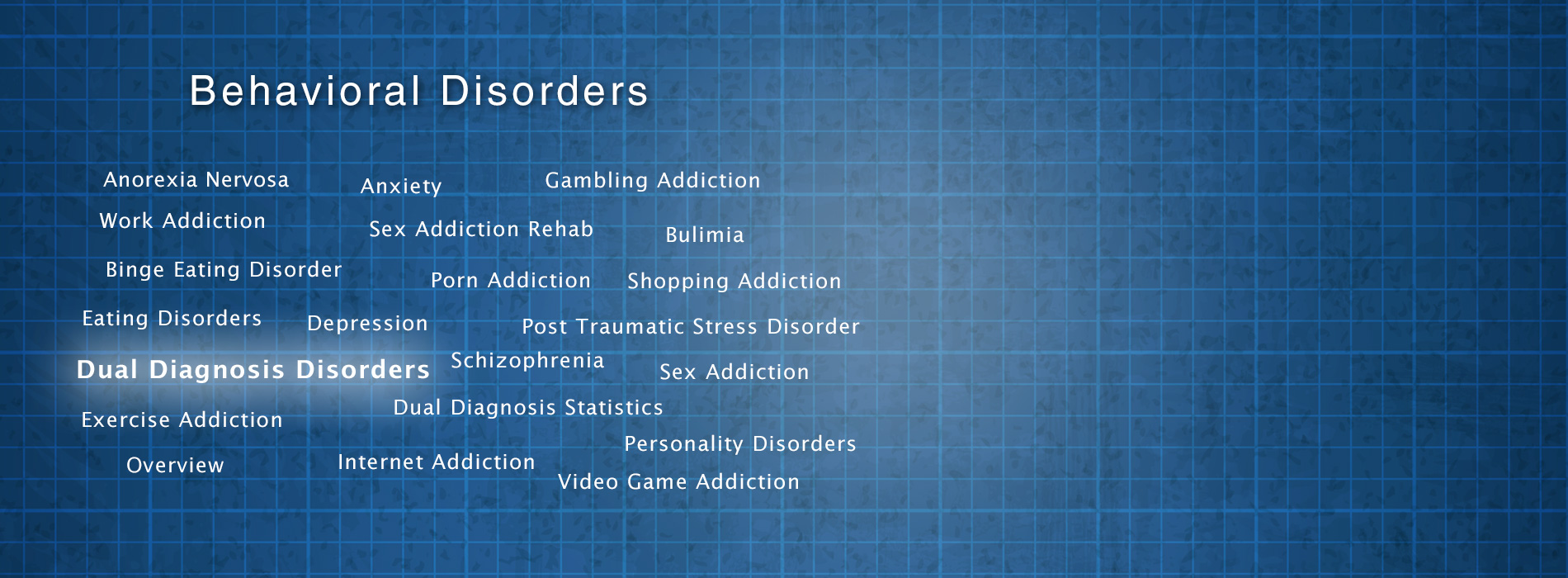Dual Diagnosis Disorders
Human psychology is extremely complicated. Every cognitive process is interlinked with one another, and when one aspect of the mind is affected by a disorder, it is likely that another part will be as well. Dual diagnosis is just one of the ways in which parts of the brain can be linked.
Dual diagnosis occurs when a patient suffers from a mental illness along with a substance abuse problem. To clarify, it is different from having psychiatric symptoms arise due to a drug addiction or abuse. Dual diagnosis refers to specific cases in which the mental illness was present before the substance abuse problem. The link between mental illness and substance abuse is different for every individual, as dial diagnosis covers a wide range of substances, disorders, and people with their own unique background and genetics.
Oftentimes, the substance abuse problem occurs as a method of self-medicating or mediating the underlying mental illness. The substance is often chosen to counteract symptoms of the disorder or side-effects of psychiatric medications. Stimulants are often chosen to mediate the sedation caused by mood-stabilizing or anti-psychotic medications used to treat psychosis and mood disorders. Individuals with ADHD or anxiety might seek out drugs such as alcohol, cannabis, or benzodiazepines to alleviate their symptoms. Individuals with ADHD have been shown to be particularly vulnerable to substance abuse as well as difficulty with treatment of both conditions.
Patients with mental disorders might also use substances to alleviate dysphoria, or negative self-image. People with mental disorders often feel internalized guilt or shame over their illness. Alcohol, cannabis, and other substances provide temporary relief from these negative feelings.
Another theory on dual diagnosis proposes that the reason for mental illness occurring together with drug misuse is that mental illnesses have several risk factors that overlap with risk factors for drug abuse. Traumatic life events, for example, can result in mental illness and substance abuse as coping mechanisms. Poverty is another risk factor for both mental illness and drug abuse for various reasons. Overlapping biological and psychological vulnerabilities also play a role in the co-morbidity of substance abuse and mental illness.
On the other hand, autism decreases the risk of substance abuse in individuals on the autism spectrum. Those with autism are introverted and lack sensation-seeking personality traits, putting them at less of a risk for substance abuse. Substances such as alcohol can worsen the symptoms of autism, such as difficulty perceiving and processing facial expressions, which might cause those with autism to avoid them.
Treatment for dial diagnosis is vastly under served in the United States, with only about 12% of individuals receiving treatment in 2011. The treatment process can address the underlying disorder only, or it can treat the disorder and the substance abuse concurrently or subsequently. Integrated treatment has been shown to be the most efficacious method, where the treatment for both the mental disorder and substance abuse are combined into a single treatment program. Treatment should hold the goal of long-term success rather than short term and should integrate therapy along with any medications that might be used to manage cravings, withdrawal effects, and anxiety.

